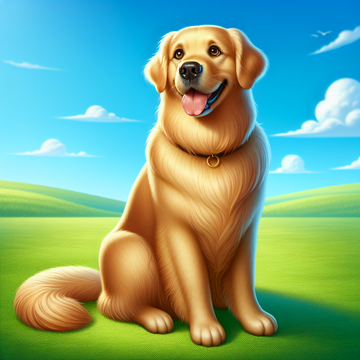A Professional Dog Trainer’s Guide to Training Your Dog
Ready to start training your dog or puppy? Whether you're a new dog owner or just need a refresher, it’s essential to begin training early. Simple commands like “sit,” “stay,” “come,” and potty training should be your first steps. The good news is, even as a beginner, you can successfully train your dog with the right tools and methods.
Training your dog can seem like a big project, especially if it’s your first time. But don’t worry—breaking it down into smaller steps makes the process much easier. Let’s dive into what you need to know to get started.
Dog Training Basics
1. **Establish a Routine**
First, consistency is key. Before you begin any training, make sure you have a solid routine in place. Dogs thrive on consistency, so set clear rules, and make sure everyone in the household follows them. This will give your dog a strong foundation to build on [AKC – Training Basics]
2. **Positive Reinforcement**
Using positive reinforcement is one of the most effective ways to train your dog. This method involves rewarding your dog when they do something right. Rewards can be treats, toys, or even verbal praise. Positive reinforcement encourages your dog to repeat behaviors you like, and it can be used in almost any situation [CPDT – Training with Positive Reinforcement].
3. **Keep Training Fun**
Training should be enjoyable for both you and your dog. Keep sessions short—about 10-15 minutes—to avoid frustration, and always end on a positive note. If your dog is having fun, they’ll learn more quickly, and you’ll both be more engaged [APDT – Dog Training 101].
Housetraining and Crate Training
Potty training is one of the first things you’ll need to address. Most dogs do best when they have a clear routine, which is where crate training can come in handy. A crate provides your dog with a safe, comfortable space and is an excellent tool for housebreaking.
- **Crate Training**: Introduce the crate as a positive, secure space for your dog to retreat to. This helps with housetraining and gives your dog a place to relax. Learn more [here].
- **Housetraining**: Potty training takes consistency. Set regular times to take your dog outside and always praise them when they go in the right spot. Be patient and remember that accidents are part of the learning process [Humane Society – How to House Train Your Dog].
- **Submissive or Excited Urination**: If your dog urinates when excited or nervous, it’s important to remain calm and avoid scolding. This type of behavior can often be corrected with confidence-building exercises and patience [AKC – Submissive Urination in Dogs].
Leash Training
Walking your dog on a leash is not only a legal requirement in most areas, but it’s also vital for your dog’s safety. Start with a short leash and give your dog time to adjust. A loose leash walk means your dog is walking beside you without pulling or lagging behind. Use treats and praise to encourage good behavior [CCPDT – Leash Training Basics].
Socializing Your Dog
Proper socialization is one of the most important things you can do for your dog. Socializing your dog helps them become comfortable around new people, animals, and environments, reducing the chances of fear-based behaviors. The goal is to expose your dog to various sights, sounds, and experiences in a controlled way. Socialized dogs are typically more relaxed and well-behaved in public settings [AKC – Socializing Your Dog].
Clicker Training
Clicker training is a form of positive reinforcement that uses a small device to make a clicking sound when your dog performs the desired behavior. The sound marks the behavior, followed by a reward. This method is especially useful because it allows for precise timing and clear communication between you and your dog [APDT – Clicker Training].
Teaching Basic Commands and Tricks
Every dog should know basic commands like “sit,” “stay,” “come,” and “leave it.” These commands provide structure for your dog and help manage behavior. They also ensure safety in many situations, such as stopping your dog from running into a street or preventing them from picking up something dangerous.
Once your dog masters the basics, teaching tricks like “roll over” or “high five” provides mental stimulation and can be a lot of fun for both you and your dog [AKC – Basic Commands].
Troubleshooting and Proofing Behaviors
Training doesn’t stop once your dog has learned a command. Proofing involves practicing the command in different environments with varying levels of distraction. Without proofing, your dog might behave perfectly in the living room but struggle to follow commands at the park or with other dogs around.
- **Practice in different settings**: Gradually increase the difficulty by adding distractions to your training sessions.
- **Identify behavior problems early**: Understanding common dog behavior problems helps you address them before they become serious [AKC – Proofing Behaviors].
Advanced Dog Training
Once your dog has mastered the basics, you can move on to more advanced training or dog sports like agility, rally obedience, or scent work. These activities keep your dog mentally and physically fit while strengthening the bond between you and your dog.
Remember, training is an ongoing process. Just as people may forget a language if they stop practicing, dogs can forget commands if not reinforced. Regular training keeps your dog sharp and ensures they continue to follow commands throughout their life [AKC – Advanced Dog Training].
FAQs
**How long should I train my dog each day?**
Short, frequent sessions are best. Even 5-10 minutes at a time can make a big difference. Multiple short sessions throughout the day work better than one long session [CCPDT – Dog Training FAQ].
**How do I teach my dog to ignore other dogs?**
Start by keeping a safe distance from other dogs and reward your dog for focusing on you instead. Gradually reduce the distance while continuing to reward calm behavior [AKC – Leash Training].
**How do I stop my dog from running away?**
Never chase after a dog that runs away—it may turn into a game. Instead, call their name and walk away, rewarding them when they come to you [APDT – Preventing Dogs from Running Away].
**How do I stop my dog from jumping on people?**
Teach your dog to “sit” when greeting people. Reward them when they sit and ask visitors to wait until your dog is calm before approaching [AKC – Stopping Jumping].
---
**Sources:**
1. [American Kennel Club (AKC) – Training Basics]()
2. [Certified Professional Dog Trainer (CCPDT) – Positive Reinforcement]
3. [Association of Professional Dog Trainers (APDT) – Dog Training 101]
4. [The Humane Society – Housetraining Tips]
5. [Victoria Stilwell’s Positively – Dog Training Techniques]






